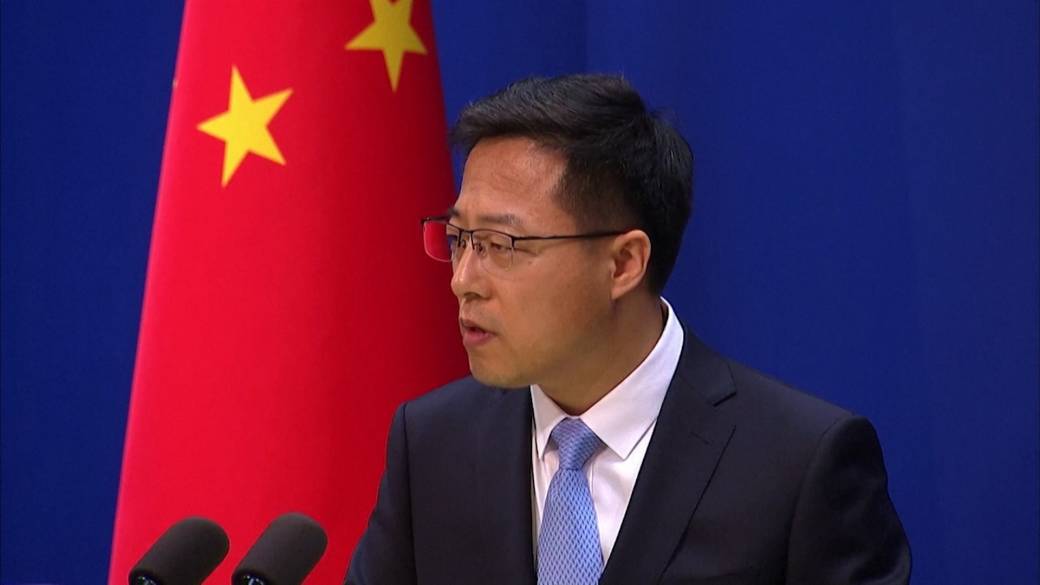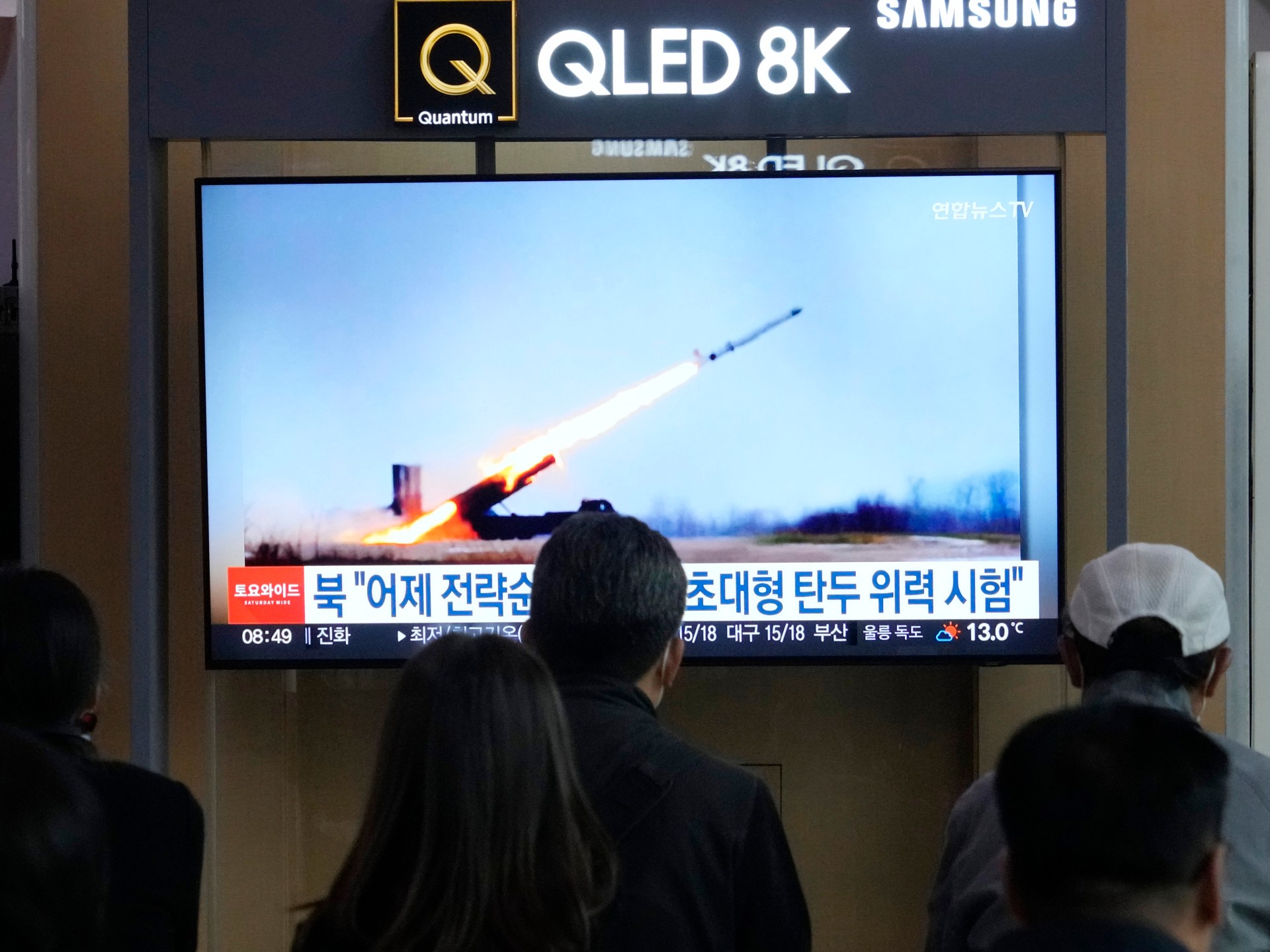Media
U.S. puts restrictions on 4 Chinese media outlets designated as ‘propaganda’ – Global News

The Trump administration added four Chinese media outlets Monday to a list of organizations that should be considered “foreign missions” because of their ties to the government and the Communist Party, a move that could force some to cut staff in the U.S. and is likely to further aggravate relations between the two countries.
State Department officials said the four organizations, including state-run CCTV, would be required to submit a list of everyone who works for them in the U.S. and any real estate holdings just as they would if they were foreign embassies or consulates.
None are being ordered to leave the U.S. and no limits on their activities were announced. But five other Chinese organizations were directed to cap the number of people who could work in the United States in March — a month after they were designated as foreign missions.
State Department officials said the organizations are essentially mouthpieces for the Communist Party and Chinese government, not legitimate news outlets.
“The Communist Party does not just exercise operational control over these propaganda entities but has full editorial control over their content,” said Assistant Secretary of State for East Asia and Pacific Affairs David Stilwell. “This foreign mission designation is an obvious step in increasing transparency of these and other PRC government propaganda activities in the United States.”
The other three added to the list of foreign missions are the China News Service, the People’s Daily newspaper and the Global Times.
It was not yet clear how many journalists work in the U.S. for the organizations designated Monday.
The U.S. designated Soviet outlets as foreign missions during the Cold War. That precedent reflects the bitter state of relations between the United States and China, which are at odds over the origin and response to the coronavirus, trade, human rights and other issues.
President Donald Trump highlighted the dispute over the coronavirus when he spoke to a rally over the weekend in Tulsa, Oklahoma, and used a racist term for COVID-19, calling it the “kung flu.”
White House press secretary Kayleigh McEnany defended Trump’s use of the term Monday, telling reporters that the president was merely pointing out that the origin of the virus is China. “It’s a fair thing to point out as China tries to ridiculously rewrite history,” she said. “What President Trump is saying, ‘no China, I will label this virus for its place of origin.”’
U.S. officials say the designated media outlets should be considered foreign missions under American law because they are “substantially owned or effectively controlled” by the government of the People’s Republic of China and shouldn’t be treated like traditional news organizations.

“These aren’t journalists. These are members of the propaganda apparatus in the PRC,” Stilwell said in a conference call with reporters.
Asked about potential Chinese retaliation, Stilwell noted that American journalists working in China already faced tight restrictions on their activities.
China had no immediate reaction to the announcement but the foreign ministry accused the administration of harbouring a “Cold War mentality and ideological prejudice” when it applied the same designation to five media organizations earlier this year.
At that time, the administration applied the label to the Xinhua News Agency, China Global Television Network, China Radio International, the China Daily Distribution Corporation, which distributes the newspaper of the same name, and Hai Tian Development USA, which distributes the People’s Daily newspaper.
Then the U.S. administration capped the number of journalists from the five allowed to work in the U.S. at 100, down from about 160. At the time, the U.S. cited China’s increasingly harsh surveillance, harassment and intimidation of American and other foreign journalists in China.
China announced in response that it would revoke the media credentials of all American journalists at The New York Times, The Wall Street Journal and The Washington Post.
___
Associated Press writer Kevin Freking contributed.
© 2020 The Canadian Press
Media
Social Media Tips for Event Profs – BizBash


Social media changes rapidly—and what worked last year might not work in 2024. (Just look at X’s, or Twitter’s, dramatic revenue loss after many major platforms have stopped posting or advertising on the platform.) So what does work on social media right now, particularly for event professionals?
“We don’t just want our audience to understand what we do—we want them to know who we are,” says Zoe Haynes, the sales and marketing coordinator for PlatinumXP who oversees the event planning agency’s digital marketing. “Social media has evolved into a space for cultivating relationships and building trust. We utilize various platforms to tell stories—the story of an event transformation, behind the scenes with our production crew, or maybe even some fun office shenanigans with our CEO.”
Haynes’ focus on maintaining a consistent, authentic brand presence was a common theme among event professionals we spoke to about how they’re using social media right now. It’s all about “fostering an ongoing connection with our followers,” agrees Elias Contessotto, social media manager for event production company 15|40.
But remember: Not every platform is created equal. Contessotto stresses the importance of tailoring your approach with each platform—but also not being afraid to experiment a bit to ensure you’re staying ahead of trends and maximizing audience engagement. “By creatively testing new tactics, we gauge audience response and efficacy, gradually integrating successful approaches into our channels,” he explains. “This iterative process empowers us to refine our content strategy continuously, adapting to evolving trends and audience preferences.”
In short, “It’s all about meeting your audience where they’re at,” says Taylor Elliot, vice president of marketing and brand strategy for Shepard Exposition Services. “Social media is such a great tool to amplify your brand voice. I always say as marketers we need to create a system that works for our brand even when we are sleeping, and social media is one of the tools to help achieve this.”
LINKEDIN & INSTAGRAM
From our conversations, LinkedIn and Instagram quickly emerged as the two top platforms in the event industry. “Instagram is our go-to for showcasing stunning event photos—however, LinkedIn holds equal if not greater importance in our strategy,” explains Haynes. “While Instagram captures attention with its visual allure, LinkedIn allows us to dive deeper into industry conversations and build relationships with our peers.”
Contessotto likes to target a B2B audience with 15|40’s LinkedIn presence, posting content that focuses on industry insights, professional networking, and collaborations with studios. “We often share static posts similar to those on Instagram, tagging relevant studios to expand our reach,” he says, noting that LinkedIn posts are often reshared by team leaders and executives. “LinkedIn [also] serves as a prime platform for spotlighting press coverage, award nominations, and industry highlights.”
On Instagram, meanwhile, Contessotto expands 15|40’s content to cater to both B2B and B2C audiences. “We share visually engaging posts that highlight our expertise, industry leadership, and collaborations, appealing to a wider range of followers,” he says. “Instagram will have ‘POV’ content, which is much more personal and requires less high-quality tools to tell our story. I came to 15|40 from an influencer background, and from experience, I notice that more amateur content does better on that platform, like using an iPhone for reels rather than a DSLR camera.”
Heather Rouffe, director of sales at Atlas Event Rental, also appreciates the more personal touch that can come with Instagram. “Through that platform, we strive to educate the industry, create brand awareness, and most importantly to us, show the personal side to our company, brand, and rentals,” she explains. “With so much of the human side of things lost in a digital age, being personable and showing the people behind the brand is very important to us. We find the clients really appreciate the behind-the-scenes content and becoming familiar with the Atlas crew.”
On the flip side, though, that doesn’t mean LinkedIn can’t get a little personal. Al Mercuro, senior account director at trade show display company Genesis Exhibits, prioritizes LinkedIn due to the connections he’s been able to make with marketing directors and event directors at companies he’d like to do business with.
“I try to not promote my company as much as my brand by sharing information that will help them in their jobs—I find I get many referrals this way,” Mercuro notes. “I believe it is also a living resume; before I meet with someone, they will often check out my LinkedIn page to learn more about me. The more you can build up your profile and the number of connections you have adds to your value and makes it attractive to have them want to work with you.”
Jonathan Kazarian, the founder and CEO of Accelevents, also uses LinkedIn to build up his personal thought leadership—and therefore, build awareness of his event management software company. “Ninety-nine percent of what I share on LinkedIn is professional,” he says. “I’ll share something about my personal life to build connection, but that’s not my focus with LinkedIn.”
FACEBOOK, TWITTER (X), TIKTOK, & MORE
In a sign of changing times, most of the event professionals we spoke with are not investing much in Facebook or Twitter (now known as X)—though many are still updating them.
“We push out all of our Instagram content to our Facebook, to ensure our followers and intended audiences on both platforms are receiving similar content,” says Contessotto. “We also maintain our Twitter, or X, channel to share some of our event photos, as well as retweet content that clients we work with post that are captured at our events.”
Mercuro finds that Facebook is still an effective way to reach older generations—but for younger generations, he’s found some success marketing events on TikTok. “I am a board member of a nonprofit concert venue, and we needed to attract a younger audience,” he remembers. “I suggested we work with a local university and their marketing classes to take on a project like our organization to give them real-life experience. They chose to use TikTok to reach the younger demographics in our area, and it has been extremely successful.”
Contessotto agrees that TikTok is naturally very Gen Z-oriented, so content should be tailored accordingly. “We’ve noticed that we typically receive high engagement when our content is celebrity-focused,” he says. “Our team is constantly working to balance out our TikTok pages to include viral content, as well as videos that highlight our diverse portfolio of work to attract the right kind of audience.”
Haynes says she’s still exploring TikTok’s potential for Platinum XP. “I’ve noticed its popularity as a discovery platform,” she says. “It’s a great tool for driving awareness, but we should also consider whether our target audience is active on TikTok.” One tool that Haynes does invest time in? Pinterest. “It’s a powerful tool for SEO purposes. Its visual nature allows us to drive awareness to our website through captivating photos. By sparking curiosity, we encourage users to click through and explore further.”
Media
North Korea conducts test on new ‘super-large warhead’: State media – Al Jazeera English


Pyongyang says new warhead designed for cruise missiles, adding that a new anti-aircraft rocket was also tested.
North Korea has conducted a test on a “super-large warhead” designed for a strategic cruise missile, state media reports, adding that it also launched a new type of anti-aircraft missile.
“The DPRK Missile Administration has conducted a power test of a super-large warhead designed for ‘Hwasal-1 Ra-3’ strategic cruise missile”, KCNA news agency reported on Saturday, referring to North Korea by an abbreviation for its official name – Democratic People’s Republic of Korea.
North Korea also carried out a test launch on Friday afternoon of a “Pyoljji-1-2”, which state media said was a “new-type anti-aircraft missile”.
KCNA added that “a certain goal was attained” through the test without providing further details.
The weapons tests were part of the “regular activities of the administration and its affiliated defence science institutes”, KCNA reported, referencing the operation of “new-type weapon systems”.
The tests “had nothing to do with the surrounding situation”, KCNA added, but did not give any further information.
In early April, North Korea said it had tested a new medium-to-long-range solid-fuel hypersonic missile, with state media sharing a video of it being launched as leader Kim Jong Un looked on.
Cruise missiles are among a growing collection of North Korean weapons designed to overwhelm regional missile defences. They supplement the North’s vast arsenal of ballistic missiles, including intercontinental variants, which are said to be aimed at the continental United States.
Analysts say anti-aircraft missile technology is an area where North Korea could benefit from its deepening military cooperation with Russia, as the two countries align in the face of their separate, intensifying confrontations with the US.
The US and South Korea have accused the North of providing artillery shells and other equipment to Russia to help extend its warfighting ability in Ukraine.
Since its second nuclear test in 2009, Pyongyang has been under heavy international sanctions, but the development of its nuclear and weapons programmes has continued unabated.
Media
Lawmakers pan Ben Gvir for ‘unforgivable’ tweet on alleged Israeli strike on Iran – The Times of Israel


Italian FM says Israel gave US ‘last minute’ warning about drone attack on Iran
CAPRI, Italy (AP) — The United States told the Group of Seven foreign ministers that it received “last minute” information from Israel about a drone action in Iran early this morning, Italy’s foreign minister says.
Italian Foreign Minister Antonio Tajani, who chaired the meeting of ministers of industrialized countries, says the United States provided the information at session this morning that was changed at the last minute to address the suspected attack.
Tajani says the US informed the G7 ministers that it had been “informed at the last minute” by Israel about the drones. “But there was no sharing of the attack by the US. It was a mere information.”
Early Friday, Iran fired air defenses at a major air base and a nuclear site near the central city of Isfahan after spotting drones, part of an apparent Israeli attack in retaliation for Tehran’s unprecedented drone-and-missile assault on the country last weekend.
In a communique following the three-day meeting, the ministers urged the parties “to prevent further escalation.”
-
Media14 hours ago
DJT Stock Rises. Trump Media CEO Alleges Potential Market Manipulation. – Barron's
-
Media16 hours ago
Trump Media alerts Nasdaq to potential market manipulation from 'naked' short selling of DJT stock – CNBC
-
Investment15 hours ago
Private equity gears up for potential National Football League investments – Financial Times
-



 Sports19 hours ago
Sports19 hours ago2024 Stanley Cup Playoffs 1st-round schedule – NHL.com
-
Real eState7 hours ago
Botched home sale costs Winnipeg man his right to sell real estate in Manitoba – CBC.ca
-



 Health24 hours ago
Health24 hours agoToronto reports 2 more measles cases. Use our tool to check the spread in Canada – Toronto Star
-
Business15 hours ago
Gas prices see 'largest single-day jump since early 2022': En-Pro International – Yahoo Canada Finance
-
Art18 hours ago
Enter the uncanny valley: New exhibition mixes AI and art photography – Euronews






